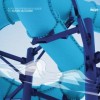Mark McGuire, "A Young Person's Guide to Mark McGuire"
 Emeralds guitarist Mark McGuire has been releasing his solo recordings on small-run CD-R and cassette pressings since 2007. This double-disc retrospective collects 20 of his best recordings over the years as selected by McGuire and Peter Rehberg—consider it McGuire's greatest hits.
Emeralds guitarist Mark McGuire has been releasing his solo recordings on small-run CD-R and cassette pressings since 2007. This double-disc retrospective collects 20 of his best recordings over the years as selected by McGuire and Peter Rehberg—consider it McGuire's greatest hits.
Fans of Emeralds' work, as well as its members' endless stream of varied, often improvisational solo recordings, will know that these guys rarely swing and miss. Pick up one of Mark McGuire's CD-Rs or tapes at a live show, for instance, and you're quite likely to be transfixed. The upside of McGuire's being so damn prolific is that each of his releases functions as a Polaroid snapshot of his work at the exact moment it was recorded. Of course, the trouble for devoted fans is that his music is often pressed in such limited quantities that it can be difficult to track down. A Young Person's Guide to Mark McGuire seeks to remedy this, in part, by packing as many of McGuire's tunes onto two discs as is feasible.
There's a healthy, varied selection of tracks from McGuire's recordings included, covering a wide range of moods and playing techniques. A Young Person's Guide opens with "Dream Team," a 17-minute guitar meltdown from the 2008 CD-R of the same name; it's a heady, challenging way for McGuire to kick off this compilation. "The Marfa Lights," which follows, couldn't be more different in its approach; instead of starting with a bang and winding slowly into the ether, like "Dream Team," it begins subtly with looped guitar, then adds layers of sharp, dissonant playing as it unfolds, reaching its peak toward the end.
"The Marfa Lights" is one of my favorite pieces here—I'd initially thought, "Wow, I'd love to hear the other tracks from that release!" before realizing McGuire had jam-packed the second disc of A Young Person's Guide with several other tracks from A Pocket Full of Rain, the 2009 double-cassette release it was selected from. Two of those tracks, the thick washes of sound in "Sick Chemistry" and "The Lonesome Foghorn Blows," are among the more effective short songs here, managing to conjure up specters of Emeralds' recent masterwork, Does It Look Like I'm Here?, in entirely-too-short form. Another, "Radio Flyer," finds McGuire in easy-listening mode; I get the sense that if I could just unplug his guitar from Lord knows how many effects pedals it's running through, it would sound excellent—as it does on "Sun Shining through the Open Barn Door," a beautiful acoustic piece.
The oldest material here is from 2007's Patterns of Development CD-R, which was limited to 75 copies at the time. Two of those four tracks—"Clague Woods" and "Slipstreams"—are too brief to make an impact, clocking in under two minutes apiece; McGuire stretches out more on the heavy, distorted Bardo Pond-isms of "Flight" and the tense atmosphere of "Ghosts around a Tree." The latter features a disembodied, operatic male voice crying in the background, overlayed with subdued guitar loops—a haunting combination that I don't recall McGuire exploring in the years since then.
The rarest inclusion on A Young Person's Guide is the 88-second "Explosion Alarm," from 2009's Losing Sleep CD-R, limited to 60 copies. Like several of the other short pieces here, it's pleasant, but too fragmented to feel necessary on its own; it functions as an interlude in the context of this collection. As a rule, McGuire's solo recordings seem to work best when he gives himself time to stretch out and develop; he doesn't strike with the quick, deadly accuracy of Emeralds at their most punchy and concise ("Double Helix"). I'm okay with that, though, and I'm pleased to hear McGuire playing to his strengths on tracks like the ornate, impossibly gorgeous "The Path Lined with Colorful Stones," from 2008's Light Movement CD-R.
The second disc of A Young Person's Guide includes five recordings from 2010, several of which are among McGuire's most promising works. The elegiac beauty of "Icy Windows," for instance, is a step forward; McGuire sets the stage with perhaps his most restrained guitar playing to date, and when the distorted lead guitar kicks in halfway through, I can feel my heart swell up in my chest. He experiments with stereo panning effects ("Skies") and bluesy palm-muted riffing ("The Invisible World") to fine effect. The final piece, "Inside Where It's Warm," is a gorgeous 13-minute comedown full of echoed guitar loops, the calm after the storm.
The material McGuire and Rehberg have included on A Young Person's Guide to Mark McGuire is so consistently warm and engaging that it's hard to find fault with the collection. It's a godsend to have this much of McGuire's solo material available on CD in such a well-curated package. No doubt each listener will find his or her own favorites—I'll be playing mine for some time.
Samples:




